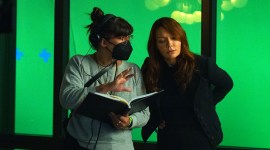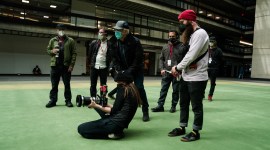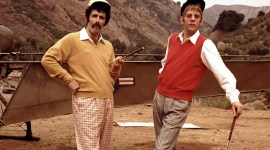
Industry Insights: An Interview with Composer Guillaume Roussel
Sound on film has come a long way since 1926. That year Don Juan became the first major motion picture to premiere with a full-length synchronized soundtrack, complete with musical score and sound effects. But, no dialogue.
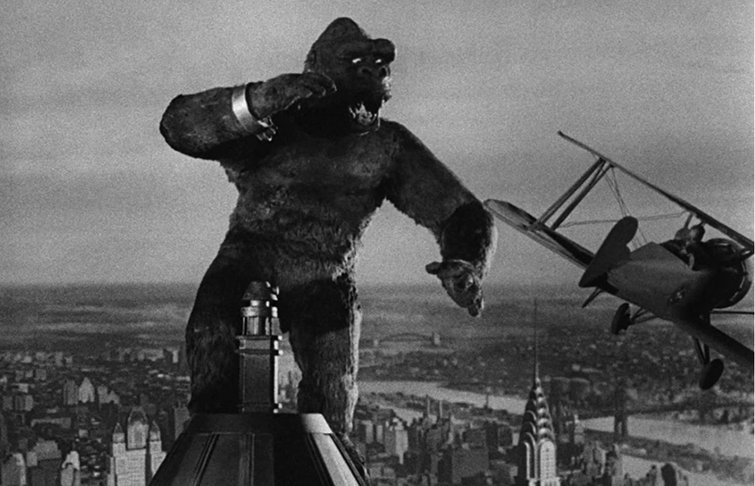
By the early 1930’s, Hollywood had fully embraced talkies, and technological improvements continued energetically. The modern film score’s emergence is most often attributed to Max Steiner for his non-diegetic film music in 1933’s King Kong. Speaking to Variety this past June, Steven C. Smith, author of Music by Max Steiner: The Epic Life of Hollywood’s Most Influential Composer, had this observation:
He’s the one who first put it all together at the dawn of the talkies, this idea of how to write orchestral music under and around dialogue—something that producers and directors really were very suspicious of in the first years of sound film. They didn’t want music in dramatic films. It was okay if it was a musical. And, Steiner is the guy who figured out, not just how to write music around dialogue, but how to write themes for characters and shape them subtly throughout.
Technical advancements—such as sound on disc moving to sound on film—allowed Steiner (and others) to explore how music could be used effectively on film. Some eighty-seven years since the gorilla climbed the Empire State Building and contemporary film scoring emerged, how has ever-changing technology contributed to that evolution?
Premium Beat had the privilege to get insight on the modern process with Composer Guillaume Roussel, who most recently scored Disney’s Black Beauty featuring Kate Winslet.
An Interview with Guillaume Roussel
Roussel has worked extensively in both France and Hollywood. In wondering what the differences might be artistically and logistically when working with European filmmakers, it was intriguing to hear Roussel focus on the relationship between music and dialogue, which Steiner tackled so many years ago.
There are so many differences between European and American filmmakers. The main difference in France is we work on a lot of comedies. The music for these comedies is supposed to be in the background, so it doesn’t interfere with the dialogue. In comedies, the dialogue is the most important. Artistically, in France it’s more restrained, as far as the music you write for pictures, unless you are working on a European sci-fi or adventure film, which is quite rare.
The other technical difference is the timbre of the actors’ voices. The sound of American voices is a lot higher in pitch than French voices. The music gets more in the way of the dialogue in France because their voices are softer. The music can’t be as rich, in terms of frequencies, than when you create the same music with English language actors.
Another recent consideration is the advent of advancements in the actual technology of filmmaking. For example, tent pole projects that are visual effects-driven. Would the technology involved in the actual filmmaking influence the technology used in the score?
To me, the main difference between a movie that is more visual and effects-driven is that it’s easier to have a more sound-oriented approach, rather than just the melody. Sometimes music can be as simple as just a piano playing. Or, it can be very grand and have many different instruments playing together. That would add more information to the movie. Meaning melody is one thing, but sound is another layer that makes the music richer. Also, I have always associated colors with sounds. I have always been fascinated by the music from the early 20th century and inspired by their paintings. To me, the visual has a direct impact on the sounds of the music, more than the melody.
Technology has also driven modern trends in the way composers collaborate with directors and producers. We asked Roussel if he did a mock-up of his composition on a synthesizer in advance of recording so that he and the director can be on the same page, with cues before getting to the scoring stage, and what the advantages and disadvantages to that process might be.
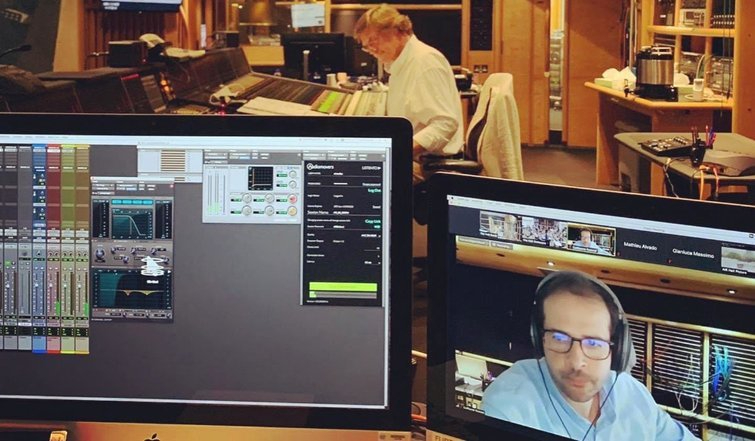
I am a big fan of writing music on the computer because of the joy it brings, being able to listen to the music while you are in the process of writing. The directors and producers love this, too. I put a lot of energy in the mock-up I’m doing, and make sure it’s as close to the final music we are going to deliver as possible. On the other hand, the only disadvantage of this approach is that the director and producer may get used to the music of the mock-up and sometimes have a hard time going from the mock-up to the final version. Sometimes listening to the mock-up over and over, no matter how much better the real version is with the orchestra, if it’s too different, they might end up preferring the mock-up version.
The other problem: It seems technically easy to create a mock-up, but it is actually quite intricate. Because of this, the demands for modifications become more frequent and in a quicker turnaround. This puts the composer in a place where you are not going to be working on the main substance of the music, but more doing fixes to please the director or producer, or to reassure them on some other detail. That sometimes takes a lot of time away from researching melodies and all that type of creative brainstorming, which is very important. It has become part of the process and likely won’t change, so there is a balance to find on how to use the technology.
It seems as though a trend for composers is “striping”—recording sections of the orchestra separately to give filmmakers greater control of the score during the final mix.
Initially, I wasn’t a big fan of striping the orchestra because, obviously, you are losing the sound of the instruments together in the same room. I do have to say, it is so convenient when you mix the movie overall. I understand why and encourage it, depending on the type of movie, but the sound effects are so important in a movie and they come at the end of the process, after the music has been recorded. To me, it’s very helpful to be able to calibrate the music, along with the sound effects. When finally, at the dub, you have all those elements at hand. The final goal is to serve the director’s vision the best way we can. He can’t achieve that vision until he has all those elements. Suddenly, he may realize that having those sound effects are very important at this moment of a key scene. Being able to lower down the percussion, instead of lowering the whole orchestra, will make the music more efficient. That’s just one example, but that’s why I think it’s a good thing, if it’s well used.
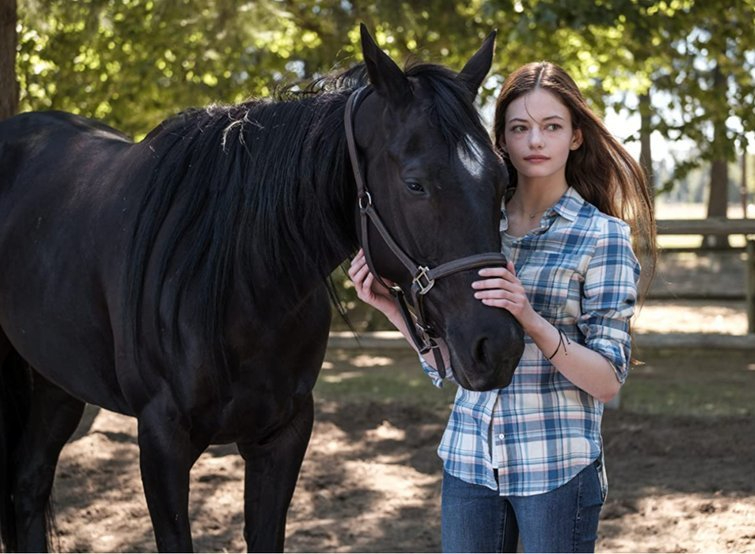
Roussel’s most recent project, Black Beauty, was crafted during our current global pandemic. He told us about using Skype to conduct a live orchestra remotely, and the challenges and unexpected perks that experience provided.
For me, the most challenging thing supervising remotely, besides the fact that I always love to hear the sound directly from the stage, is that it’s hard to manage people. When I do a recording session, I like to make sure people are putting the best energy forward. I like to take care of people to make sure everyone is happy. This is impossible to do over Skype because you are only talking to one person, which is either the recording engineer or the conductor. So, it puts you in a little box, rather than being able to feel how the musicians are reacting and feeling. The more the musicians are enjoying what they are playing, the better the music will sound! And, it’s such an amazing human experience to share in person, rather than through Skype.
Roussel works on a Mac Pro using Cubase software. We asked how he composed before using this program and how it’s been a value to his process?
Before I started using Cubase, I would write music with a pencil and paper. I always questioned how working on the computer influences the way you write, and it definitely does. This tool brings you so many opportunities to experiment with different sounds. There are so many great aspects that come with a computer, so I can’t say I would prefer a pencil and paper. The truth is, not working with a pencil and paper makes you put more effort in the production and sounds, rather than the nature of the music. Sometimes, I like to work with a piano, as much as I can, before I go any further. For me, it’s the way to stay in touch with the initial approach to composing, which is to the page. I think the computer forces you to go straight to the point, to be more efficient. It’s probably a good thing, but I like to try and keep a combination of those two approaches as much as I can.
Technology is obviously used to great advantage in composing, but it can also be used as a productive tool to collaborate with the creatives involved in production. Roussel had this to share:
Every movie is different, as far as workflow and how you interact with the director and producer. Sometimes, there is more than two people involved. So, it goes from doing a playback at my studio to sending videos through the internet. That’s probably the challenge, technically. For example, I wish everyone would have the right headphones or speakers, at least. We know they won’t be listening to the music on high-quality speakers. So, that’s one of the challenges for me. Overall, the work on productions is getting more and more remote, even before the pandemic.
Since the focus of this piece is the technology of sound, we wanted to know if Roussel had any tips and tricks he’s learned while composing.
For me, it’s important to know one (or just a few) tools really well, than numerous ones. Through the years, I’ve been able to try many different tools. Sound libraries being a big example of this. After I found my preferred sounds and orchestra libraries, and after having worked so many years with the same tools, this is so important because I write so much faster.
The main tools for composers, beyond DAW and Cubase, are sound libraries. I have been collecting sound libraries from Project Sound, Vienna Symphonic Library, Spitfire, and East West for many years. I remember twenty years ago, there were only a few sound libraries available and now there are so many—it’s hard to know which ones to use. I have had enough time, by this point in my career, to know what to select and how to combine them and what works great for mock-ups.
We postulated to Roussel that if he were going to push the boundaries of what you could do with a score on a production, what would he love to incorporate?
Something that has always fascinated me is virtual reality. I’ve never worked on a VR project because it’s still relatively new, but the way the music interacts with the audience seems a lot different than regular features or TV shows. That would be a very interesting artistic challenge that I would love to experience. I’m sure in the future, VR will give composers a new way to express their talent.
It’s fascinating to think what Max Steiner would make of the use of computer software in the scoring process or the concept of virtual reality. He was one of the first to treat music as nearly another character in the film. He knew that music has the ability to reveal emotion, highlight plot, blend and hide, or manipulate in both good and bad ways. Where can it go from here? What is the future of film scoring? And, who will the next pioneer be?
For additional industry insights, check out these articles.
- Industry Insights: Shoot Like the Coen Brothers
- Understanding the Critical Importance of the Camera Operator
- Breaking Down the Multifaceted Role of a Showrunner
- Industry Insights: Interview with Makeup Artist Kaela Dobson
- Tips from Renowned Cinematographers for Your Next Film
Cover image via Guillaume Roussel.



